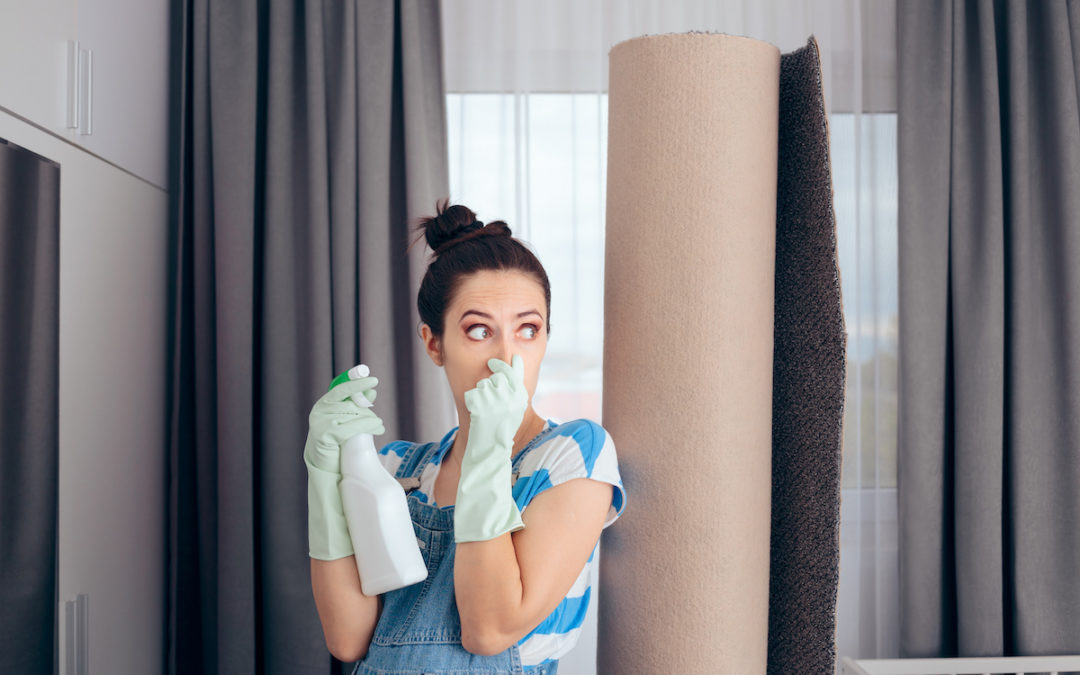Dealing with an odor problem can be one of the most annoying experiences for a homeowner. Some odors can be neutralized using over-the-counter (OTC) products available at stores, but others are not easy to eliminate. Skunk spray, severe pet urine odor, and decomposition smells are some of the most upsetting when they affect your home. But although controlling those odors can be difficult, it can be achieved. Here are tips on how to deodorize a house correctly.
Safety Comes First
Before getting rid of the odors, remember that safety is the most important thing. That’s because you might be dealing with some forms of biological contamination. You’ll need gloves, eye protection, and something that will cover your skin in case of a spill or splash. Also, wear an N-95 disposable respirator which you can purchase from any Home Depot or similar stores. The respirator will prevent anything from getting into the mucus membranes of your nose and mouth.
After ensuring your safety, the first step in removing an odor is removing the source.
How to Deodorize a House Affected by Skunk Spray or Pet Urine
- Nonporous surfaces — If pet urine or skunk spray is on a nonporous surface, such as metal or plastic, thorough cleaning is the first step and maybe enough. Since the odorous substance contains natural oils, which is the cause of the smell, you will want a strong detergent. Using warm water and strong detergent should be practical and should not take long. After washing the surface, rinse it with warm water. If the smell is still there, repeat the process. Ensure to rinse with warm water to clean away any residue left behind.
- Porous surfaces — If pet urine or skunk is on a porous surface, like carpet, particleboard, or upholstery, cleaning them is also the first step. Clean these as you would a nonporous surface. These surfaces are more challenging to clean, so call a professional restoration company if your efforts are not successful or if the task is too overwhelming. Carpet and pads with excessive pet urine damage should usually be removed and discarded.
- Semiporous surfaces — On semi-porous materials, such as wood, are also clean with a solution of water and detergent, as explained above. To help neutralize the odor, the detergent should penetrate the material. However, if the wood is heavily damaged by urine or skunk spray, it will most likely need to be disposed of. Seek assistance from a restoration company to improve your chances of restoring damaged semi-porous material.
How to Deodorize a House Affected by Decomposition Odor
- Dead body odors — Professional assistance is strongly recommended if the issue involves a deceased person. After the proper authorities have removed the body, cleaning and decontaminating the fluids come under Occupational Safety and Health Administration (OSHA), Blood and Other Potentially Infectious Material (BOPIM) regulations. These regulations specify the training, equipment, safety issues, and products that must be used to remove and decontaminate an area damaged by BOPIM safely. Professional restoration companies follow these regulations to decontaminate areas where decomposition occurs safely.
- Dead animal odors — If the decomposition source is a small animal, such as a rodent, the approach is similar to removing pet urine or skunk spray. Wear protective gear first, clean and sanitize nonporous and semi-porous material, and discard damaged absorbent material. Semi-porous and nonporous materials must be thoroughly cleaned and then sanitized with a disinfectant. OTC disinfectants are very effective and result in a clean and sanitary surface.
Call PuroFirst for Professional Property Damage Restoration
The odor should disappear after applying these tips on deodorizing a house. If the odor is still present after your hard work, try an air freshener. But if the problem persists, call PuroFirst at (760) 245-5545. PuroFirst is here to help with all property damage restoration services that you could need.


Recent Comments